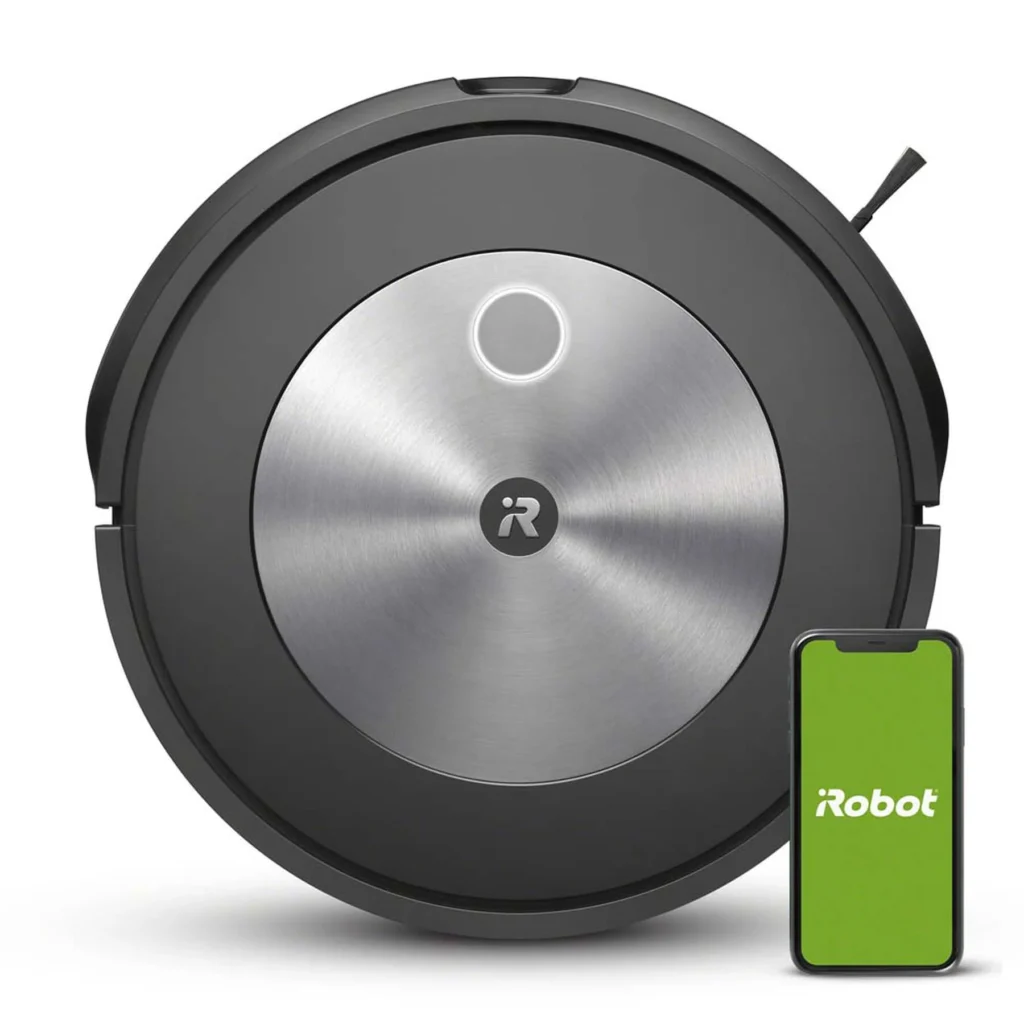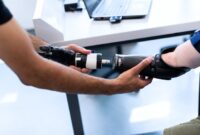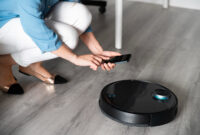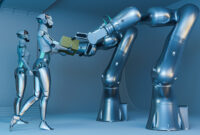The iRobot Roomba has revolutionized the way we clean our homes. With its advanced technology and innovative features, the Roomba offers a convenient and efficient solution for maintaining a tidy living space. In this comprehensive guide, we will explore the world of Roomba vacuum cleaners, covering everything from their history and different models to key features, tips for optimal performance, and a comparison with traditional vacuum cleaners. So, let’s dive in and discover the ultimate guide to the iRobot Roomba.

Introduction to the iRobot Roomba
The iRobot Roomba is a line of robotic vacuum cleaners designed to autonomously clean floors. It was first introduced in 2002 and has since become a popular choice for homeowners worldwide. The Roomba utilizes intelligent navigation systems, powerful suction, and a variety of sensors to efficiently clean different floor surfaces, including hardwood, carpet, and tile.
History of the Roomba
The Roomba robotic vacuum cleaner has an interesting and innovative history that spans several decades. Let’s delve into the origins and evolution of this remarkable cleaning device.
The story of the Roomba begins in the late 1980s when Helen Greiner, Colin Angle, and Rodney Brooks founded iRobot Corporation. Initially, the company focused on developing robots for military and industrial purposes. However, they soon recognized the potential for consumer robotics and began exploring opportunities in that market.
In the late 1990s, iRobot set its sights on developing a robotic vacuum cleaner. The team saw the demand for an automated cleaning solution that could efficiently navigate and clean floors without human intervention. With their expertise in robotics and artificial intelligence, they were determined to bring their vision to life.
After years of research and development, iRobot introduced the first Roomba model, the Roomba 400 series, in 2002. This groundbreaking device featured a compact, circular design and a set of brushes and sensors that allowed it to navigate rooms and clean autonomously. The Roomba 400 series quickly gained attention and became a commercial success.
Building on this initial success, iRobot continued to refine and improve the Roomba with each new generation. They introduced new features and technologies, such as advanced navigation systems, improved cleaning performance, and Wi-Fi connectivity. These enhancements made the Roomba even more efficient and user-friendly.
Over the years, the Roomba has evolved into a comprehensive line of robotic vacuum cleaners with various models to suit different needs and budgets. From entry-level models to high-end offerings, the Roomba has become a household name synonymous with automated cleaning.
iRobot’s commitment to innovation didn’t stop at just vacuuming. They expanded their product line to include other robotic cleaning devices, such as the Braava mopping robots, designed to complement the Roomba and provide comprehensive floor cleaning solutions.
Today, the Roomba has become a ubiquitous presence in homes around the world. It has revolutionized the way people approach household cleaning, saving time and effort while maintaining a clean living environment. iRobot’s dedication to research and development continues to push the boundaries of what the Roomba can achieve, ensuring that it remains at the forefront of robotic vacuum technology.
The history of the Roomba showcases the remarkable progress and advancements in the field of robotics, demonstrating how a simple idea can transform into a groundbreaking product that changes our everyday lives.
Understanding the Different Roomba Models
Understanding the different Roomba models is crucial when selecting the right one for your cleaning needs. iRobot offers a wide range of Roomba models, each with its own set of features, performance capabilities, and price points. Let’s explore the different types of Roomba models available and what sets them apart from one another.
Entry-level Roomba models:
Entry-level Roomba models are designed to provide essential cleaning functionality at an affordable price. These models are suitable for smaller homes or those with simpler cleaning requirements. While they may not have all the advanced features of higher-end models, they still offer reliable cleaning performance. Entry-level Roomba models typically come with basic navigation systems, standard brush configurations, and simple scheduling options.
Mid-range Roomba models:
Mid-range Roomba models offer a step up in terms of performance and features compared to the entry-level models. These models incorporate more advanced technologies to enhance cleaning efficiency and navigation capabilities. They often have improved brush systems, such as dual multi-surface brushes, which are more effective at picking up dirt and debris. Mid-range Roombas may also include additional features like compatibility with virtual walls or barriers, allowing you to restrict the cleaning areas.
High-end Roomba models:
High-end Roomba models represent the top tier of iRobot’s robotic vacuum cleaners. These models come equipped with the latest technologies and offer the most advanced features for a superior cleaning experience. High-end Roombas often feature advanced mapping and navigation systems, such as iAdapt 3.0 or vSLAM technology, which enable more precise room mapping and efficient cleaning paths. They may also include specialized brush systems, like rubberized extractors or edge-sweeping brushes, for enhanced cleaning performance. Some high-end Roombas even offer automatic dirt disposal, allowing the vacuum cleaner to empty its bin into a larger self-emptying base station.
In addition to these broad categories, iRobot periodically introduces limited-edition or special models that come with unique features or design variations. These special editions may offer exclusive color options, additional accessories, or customized cleaning modes.
When selecting a Roomba model, it’s important to consider your specific cleaning requirements, budget, and the size and layout of your home. If you have a smaller space with straightforward cleaning needs, an entry-level model may be sufficient. For larger homes or homes with pets, a mid-range or high-end model with more advanced features and higher cleaning performance would be ideal.
By understanding the differences between the various Roomba models, you can make an informed decision and choose the one that best suits your cleaning preferences and budget. Whether you opt for an entry-level, mid-range, or high-end Roomba, you can expect a reliable and efficient cleaning companion that makes your life easier and keeps your floors looking their best.
Key Features and Technologies of the Roomba
The Roomba incorporates several key features and technologies that contribute to its exceptional cleaning performance and convenience. Let’s explore some of the notable features:
Navigation and mapping
Roomba models use intelligent navigation systems, such as iAdapt or iAdapt 3.0, to navigate and map your home. These systems enable the Roomba to efficiently clean every room while avoiding obstacles and stairs.
Cleaning performance
Roomba vacuum cleaners employ powerful suction and brushes to remove dirt, dust, and debris from various floor types. Advanced brush systems, such as dual multi-surface brushes and edge-sweeping brushes, ensure thorough cleaning along walls and corners.
Wi-Fi connectivity and app control
Many Roomba models offer Wi-Fi connectivity, allowing you to control and monitor your device through smartphone apps. You can start or schedule cleaning sessions, customize cleaning preferences, and receive notifications or alerts.
Virtual walls and barriers
Virtual wall or barrier accessories can be used to define boundaries and restrict the Roomba’s cleaning areas. They are especially useful for avoiding delicate objects or preventing the Roomba from entering certain rooms.
Automatic dirt disposal
Some high-end Roomba models feature automatic dirt disposal systems. These systems allow the Roomba to empty its bin into a larger self-emptying base station, reducing the need for frequent manual emptying.
How to Choose the Right Roomba Model for Your Needs
Choosing the right Roomba model can ensure that you have a vacuum cleaner that meets your specific cleaning needs and fits within your budget. To help you make an informed decision, consider the following factors when selecting a Roomba model:
- Cleaning Requirements: Assess your cleaning requirements and the specific features you need. Do you have a large home or a small apartment? Do you have pets? Are there specific floor types or surfaces you need the Roomba to clean? Understanding your cleaning needs will guide you in selecting a model with the appropriate cleaning performance, brush systems, and filtration.
- Navigation and Mapping: Consider the navigation and mapping capabilities of the Roomba models. If you have a complex layout or multiple rooms, you may benefit from a model with advanced navigation systems like iAdapt 3.0 or vSLAM, which provide more precise room mapping and efficient cleaning paths.
- Budget: Determine your budget for a Roomba and find a model that falls within that range. Roomba models vary in price based on their features and performance capabilities. Assess your priorities and select a model that offers the right balance of features and affordability.
- Special Requirements: If you have specific needs, such as allergy concerns, look for models with HEPA filters or high-efficiency filtration systems. If you have a multi-level home, consider models that can easily navigate stairs or those that come with additional virtual wall barriers to confine the cleaning area.
- Smart Connectivity: Decide whether you prefer Wi-Fi connectivity and app control for convenient scheduling, monitoring, and customization of cleaning sessions. If you enjoy using voice assistants, check for compatibility with platforms like Amazon Alexa or Google Assistant.
- Battery Life and Recharge Options: If you have a larger space, longer battery life may be beneficial to ensure the Roomba can complete the cleaning cycle without needing frequent recharging. Look for models with extended battery life or features like automatic recharging and resuming cleaning sessions.
- Additional Accessories and Maintenance: Consider any additional accessories or maintenance requirements that may be important to you. Some models come with extra brushes, filters, or virtual walls, while others offer automatic dirt disposal systems. Assess whether these additional features are essential for your cleaning routine.
- Reviews and User Feedback: Read reviews and user feedback to get insights into the performance, durability, and customer satisfaction of different Roomba models. Real-life experiences can help you gauge how well a specific model performs in various cleaning scenarios.
By considering these factors, you can narrow down your options and select a Roomba model that aligns with your cleaning needs, preferences, and budget. Remember that each model offers a unique combination of features, so take your time to find the one that best suits your requirements.
Tips for Optimal Roomba Performance
To maximize the performance and longevity of your Roomba, follow these essential tips:
Prepare your home before cleaning
Ensure your floors are clear of any obstacles or clutter that may hinder the Roomba’s navigation. Pick up small items, secure loose cables, and remove any potential hazards.
Regular maintenance and cleaning
Clean the Roomba’s brushes, filter, and sensors regularly to maintain optimal cleaning performance. Empty the dustbin after each cleaning session and replace worn-out parts as needed.
Troubleshooting common issues
If you encounter any issues or errors with your Roomba, consult the user manual or the manufacturer’s website for troubleshooting tips. Performing routine maintenance and keeping the Roomba’s software updated can often resolve common issues.
Roomba vs. Traditional Vacuum Cleaners
Let’s compare the Roomba with traditional vacuum cleaners to understand the advantages it offers:
Convenience and automation
The Roomba’s autonomous operation saves you time and effort. You can schedule cleaning sessions or start them remotely, allowing the Roomba to clean even when you’re not at home.
Cleaning efficiency and effectiveness
The Roomba’s advanced cleaning technologies, including powerful suction and intelligent navigation, result in efficient and thorough cleaning. It can reach areas that traditional vacuum cleaners may struggle to access.
Cost-effectiveness and long-term savings
Although Roomba models may have a higher upfront cost compared to traditional vacuum cleaners, their longevity and cleaning efficiency can lead to long-term savings. Additionally, the time and effort saved by using a Roomba can be invaluable.
User reviews and satisfaction
Roomba vacuum cleaners have gained widespread popularity and positive reviews from users worldwide. Many users appreciate the convenience, efficiency, and reliability of the Roomba for maintaining a clean home.
FAQs
How long does the Roomba battery last?
The battery life of a Roomba depends on the model and usage. On average, a fully charged Roomba battery can clean for around 60 to 120 minutes before requiring a recharge.
Can the Roomba clean different floor types?
Yes, Roomba models are designed to clean various floor types, including hardwood, carpet, tile, and laminate. They automatically adjust their cleaning settings to optimize performance on different surfaces.
Is the Roomba suitable for pet owners?
Absolutely! The Roomba is highly effective at picking up pet hair and dander. Certain Roomba models even feature specialized brush systems and high-efficiency filters to capture pet-related allergens.
Can the Roomba navigate through cluttered areas?
While the Roomba's navigation systems are designed to avoid obstacles, excessive clutter or very small objects may impede its movement. It's advisable to tidy up your floors before a cleaning session to ensure optimal navigation.
Does the Roomba require any maintenance?
Yes, regular maintenance is essential to keep your Roomba running smoothly. This includes cleaning the brushes and filter, emptying the dustbin, and checking for any blockages or wear and tear.
Conclusion
The iRobot Roomba is a game-changer in the world of home cleaning. With its advanced features, intelligent navigation, and powerful cleaning performance, the Roomba offers a convenient and efficient way to maintain a clean living space. By considering your specific needs, you can choose the right Roomba model that suits your home and lifestyle. So, say goodbye to traditional vacuuming and embrace the future of automated cleaning with the iRobot Roomba.


